Petroleum warfare at Kingston and Southease
Posted: 28 October 2008 23:43
Further to my visit to Kingston, I was also there to investigate flame fougasses. There were 5 of these booby traps at Kingston and 6 at Southease.
Kingston Hollow is a narrow stretch of road flanked by high banks on both sides; perfect for ambushing vehicles.
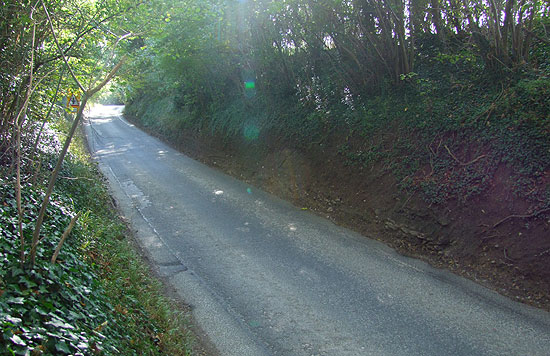
In the 500m stretch of road north of the crossroads with its roadblocks, there were three fougasses; one in the eastern bank and two in the western. There was also a position on each side of the road from which the firing party would detonate each trap as required.
The problem when trying to locate these fougasses is that there are no pavements at road level, and it is certainly no place for pedestrians; the banks are too steep to climb up to avoid traffic.
A footpath does, however, run along the top of the eastern bank allowing some observation of the west bank through the vegetation, which is quite dense in places.
Using a list I found in the archives of fougasses in the area, I marked the crossroads on my GPS and used it to measure how far along the footpath I had walked. I did this because the list describes the locations by the approximate number of yards from the crossroads and I was not expecting to find anything by sight alone.
This method helped me locate the stretch of bank seen below:
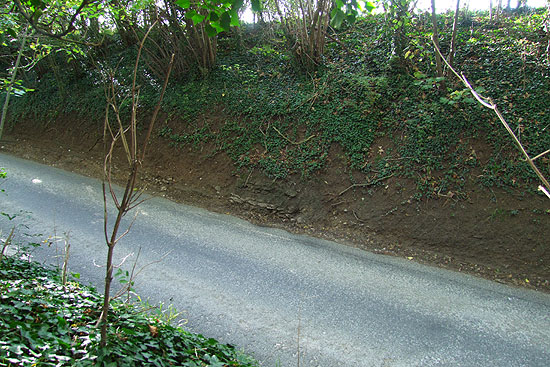
A close up of part of the same stretch appears to show where the most northerly fougasse was. One fougasse lay forgotten in the bank until it was uncovered and removed in 1994 and I assume that this feature is where the bank has been shored up with cemented sandbags to fill in the cavity.
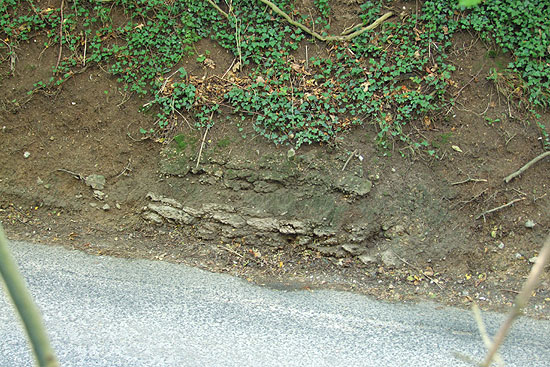
I couldn't locate the other fougasse in the west bank, and, being on top of the east bank, I wasn't going to be able to find the third trap either. This left me with only the position used by the firing party on the eastern side available to find.
Out came the GPS and some perserverance in the undergrowth resulted in my finding an in-filled L-shaped slit trench.
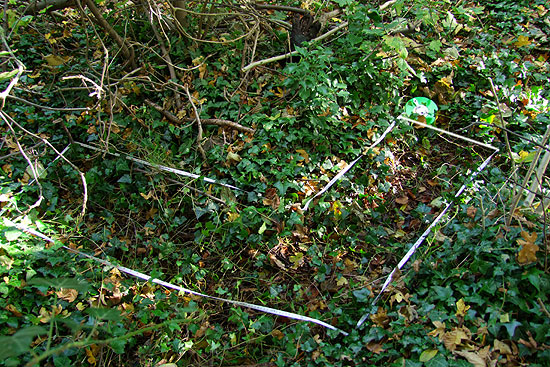
I'm satisfied this is the firing point for the eastern fougasse; from this position, the trench occupants can see south to the crossroads, and about 50m up the road to the north. This last distance is key, as this is how far away the fougasse is said to have been from the firing point. The trap was probably sited at the far extent of the firer's field of view along the road so that he would not have to estimate whether an approaching tank was in range of his fougasse; the moment he could see a tank coming was the moment to fire the charge.
The photo below shows the trench on top of the bank, which must be about 6-8m high at this point.
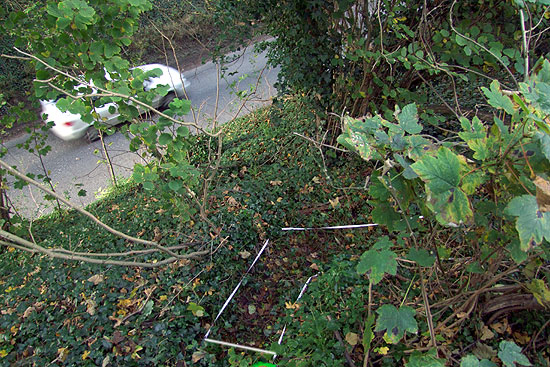
Having found all I could at this point, a brief search south of the crossroads failed to identify the locations of the other two fougasses, so I decided to take a quick trip to Southease, where the list identified another six locations. I visited Southease back in September, so I was familiar with the lie of the land.
Again, there are lots of high banks in which to site fougasses, and on which to site positions for firing parties.
I only had limited time, so I went in search of the firing point of two of the fougasses as I knew the ground it was on was accessible, and that there were only a few points at which both traps would be visible to the firer.
Climbing the bank, I stepped straight into a shallow depression right where I would have expected the firing point to have been!
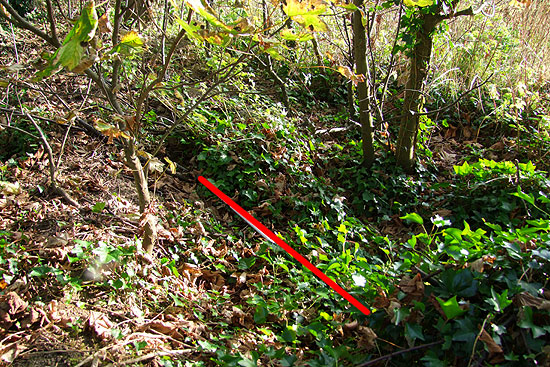
The vegetation and a rabbit hole made it hard to see the actual shape of the feature, so I don't know if it was a slit trench or a larger pit, but its location allows it to cover two (if not, three) roadblocks and it can also see a Type 24 pillbox on the road junction towards which one of the fougasses was aimed.
I didn't have time to investigate the other sites, so another visit is on the cards.
- Pete

Email:
Blog Latest

Bishopstone reveals its pillbox secrets
18 October 2021

Pillbox or Observation Post?
10 June 2020

Uncovering the hidden secrets of a pillbox
8 June 2019

Review of 2018
31 December 2018

Wartime Christmas in East Sussex (2)
24 December 2018
Jargon-buster
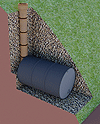
Barrel flame trap
Incendiary booby-trap comprising a battery of oil drums dug in and concealed, usually in a roadside bank and detonated remotely as an enemy vehicle passes it. Also known as a flame fougasse.
Pillbox
Generic term for a hardened field defensive structure usually constructed from concrete and/or masonry. Pillboxes were built in numerous types and variants depending on location and role.
Slit trench
Small, narrow trench designed to provide protection against shrapnel and other battlefield hazards. Technically distinct from a weapon pit (which was intended soley as a defensive position) slit trenches were also used as defence works.

Type 24 pillbox
A six-sided (but not a regular hexagon) pillbox. The Type 24 is the most frequently seen pillbox in East Sussex, mostly along stop lines. It can be found in thin wall (30cm) or thick wall (1m) variants.
This site is copyright © Peter Hibbs 2006 - 2024. All rights reserved.
Hibbs, Peter Petroleum warfare at Kingston and Southease (2024) Available at: http://pillbox.org.uk/blog/216578/ Accessed: 27 July 2024
The information on this website is intended solely to describe the ongoing research activity of The Defence of East Sussex Project; it is not comprehensive or properly presented. It is therefore NOT suitable as a basis for producing derivative works or surveys!